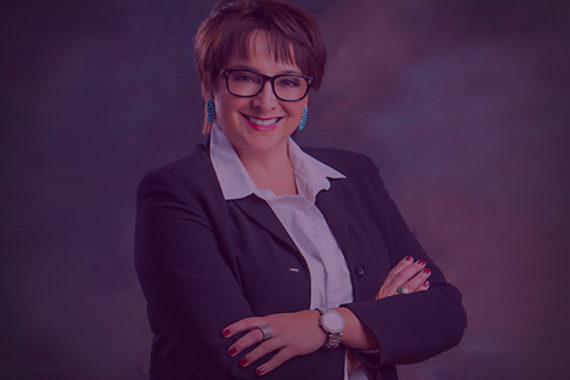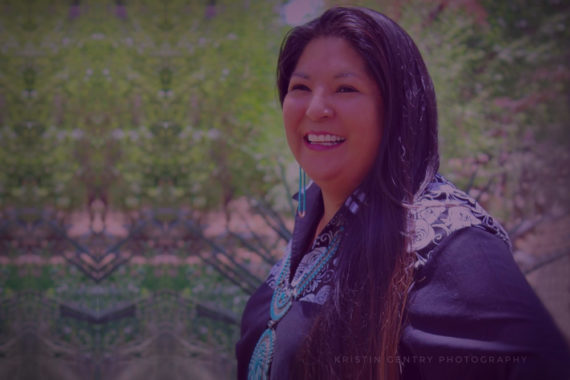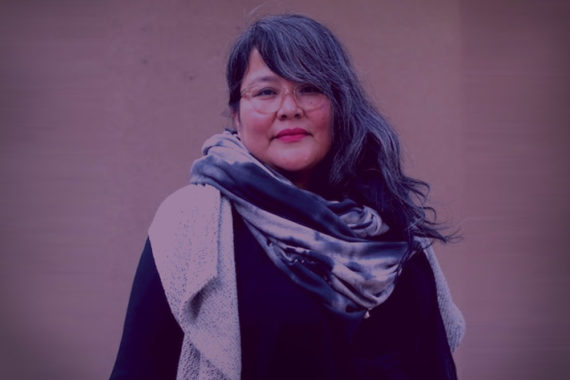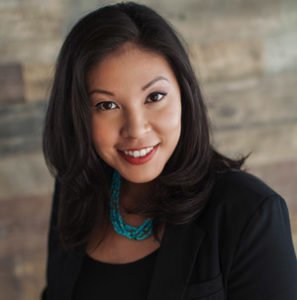
Amanda June, Founder of Indigenous Peoples’ Collective
Welcome to a special season of Pitch Makeover, recorded at the Native Women’s Business Summit. In this episode, Natalia is joined by Amanda June of Indigenous Peoples’ Collective, a first user founder whose business supports Native artisans in an e-commerce platform. Plus, Jaime Gloshay joins us for the Investor Take.
The Native Women’s Business Summit returns April 5th and 6th. Tickets and more info at NativeWomenLead.org.
EPISODE TRANSCRIPT
Gina Delvac: Welcome to a mini season of Pitch Makeover, recorded at the Native Women’s Business Summit.
One of the updates you will notice in this new season of Pitch Makeover is a land acknowledgement, thanks to Anisa Flowers, an enrolled Woodland Cree Tribal Member and Chief of Staff at Pipeline Angels.
You’ll hear this land acknowledgement at the beginning of each episode and we’re grateful for Anisa’s guidance on this practice, which we will continue in future seasons.
The Native Women’s Business Summit was held, and these episodes were recorded, on Pueblos land (known as Albuquerque due to white colonizers).
To learn more and find out whose stolen land you’re on, search for the Native Land app.
For this episode, Natalia is joined by entrepreneur Amanda June, who is Navajo, Hopi, and Latina. Now, here are Natalia and Amanda June from the Native Women’s Business Summit…
Natalia: Hey everyone, it’s Natalia, creator and host of Pitch Makeover. We are back for a special edition. I am in Albuquerque supporting my friend Vanessa Roanhorse, one of the co-creators of the Native Women’s Business Summit which happened yesterday. And, today I am having the great honor and pleasure of featuring several native women entrepreneurs who attended yesterday’s summit. So sit back, relax and just enjoy the show.
Today with me is Amanda June, the founder of Indigenous Peoples’ Collective. Hey, Amanda, thanks for being here in the studio with us!
Amanda: I’m happy to be here!
Natalia: Awesome! So, are you ready to pitch?
Amanda: Yes.
Natalia: Okay. Let me start the timer and then let’s check out your one minute pitch. Ready? Set? Go!
Amanda: For thousands of years, Indigenous peoples have been creating jewelry and goods and forging trade partnerships with other tribes. Despite periods of mass historic trauma and upheaval of their cultures and life-ways, Indigenous communities continue their crafts and arts passed down through their families. We fast forward to the last few hundred years, Indigenous arts continue to be stolen, appropriated, and reproduced in mass amounts without consequence. This is because the industry is completely unstructured and has no consistency in pricing, partially due to the family passing down of the arts. Indigenous Peoples’ Collective’s solution is to bring Indigenous goods to the global market through e-commerce where anyone can access the goods, and artisans can continue to sell their goods, but do it in a way that preserves the cultural integrity and produces manufacturing on our own tribal lands. You may think, “Why doesn’t Etsy do this? Isn’t this kind of a market for them?” But the answer is: Indigenous arts and crafts are completely different from other arts and crafts industries simply because they’re so connected to our cultures. They carry on our histories, our pasts, and life-way stories. And so there’s a huge piece that is not preserved there going through a mass arts and crafts platform like Etsy. So, our team with Indigenous Peoples’ Collective is going to work with the actual artisans to do training, produce products on tribal lands, and begin to sell these on a mass scale through the global community. And so what we’re looking for is $100,000 in start-up funds to help us begin product development, get the team together, and begin putting out this model to produce proof of concept and market fit, and we hope that we’ll be able to do that in the next year or so.
Natalia: Awesome. So, let’s start off. That was two minute and ten seconds. [Both laugh.] So this is why I do Pitch Makeover is to tell you what to keep, what to add, and what to delete. I’ll just be very candid…I feel like I’m going to be deleting and not much adding because you gave me a lot of stuff, Amanda. So, thank you for being comprehensive. I get very excited, so, like, I immediately am thinking, like, “What am I going to tell you about the Pitch Makeover.” Before that, I did want to take a step back and share a little bit more about, you know, Indigenous Peoples’ Collective. You mentioned the $100k. Let’s talk a little bit more about that. You mentioned start-up funds, right? And you mentioned building the team. Can you just give me a little bit more detail about that? You have $100k. What are you going to do with it?
Amanda: Right. And so, as we’ve started to put the budget together and just the scenarios of how we would roll this out to the market. It’s not really anything new. There are existing models out there that take Native, or Indigenous, goods and start producing them on a grand scale, but they start with small – with one or two products. And so for us there’s already existing market demand. There’s tons of Native talent, Indigenous artisans out there that are creating tons of great products. So it’s not that we have to do a lot in the product development because there are tons of existing products out there, but we do need to work on how we distribute and those channels of manufacturing. And so what I would like to do is – and the model that I use is we’re always about – and this is something that Indigenous communities carry through no matter where you are in the globe – is that it’s always about community first. And in many Indigenous cultures the idea of individuality or self is not something that’s – it’s kind of foreign to us. We’re always about community first. And so my thought is that we’re always going to be about working with community and doing what’s best for community. And in that way, I would love to have artists involved from the very beginning. So I would like to have artist-ambassadors who are part of the planning and developing team that are able to go out and they already know the networks, they know who’s doing what – you know it’s a very small close-knit community – and kind of recruit other artisans so that we have a lot of product, existing product, to start off with and begin building up the team and sales to do wholesale distribution and retail.
Natalia: Amanda, are you an artisan yourself?
Amanda: I am.
Natalia: So I would say that’s really important to highlight. So I’m going to add that to my – I think you might actually have an addition that I’m going to ask you for in the pitch makeover. Is there anything else that you haven’t shared yet that you, like, I want to give you this context?
Amanda: I think…that’s why, too, it was hard: “I don’t know how I’m going to keep this to under a minute” because there’s so much – the historical background, right? And like I said, it’s a lot of other models that are in place, but fusing those models together to kind of create this social venture, and so it was hard to, like, what do I leave out? And do I need to keep it all in for background? But I think the market information about potential sales, I just couldn’t get to, you know, there was very little room. I think the US statistics in 2016 was there was $6.7 billion in Gross Domestic Product to the US alone of international tourism that have specifically said that the international visitors are coming to tour Native lands and Tribal tourism. So that is a huge – and those numbers just started being compiled. And in the state of Arizona, where I’m from, we have twenty-two different Tribes and they don’t collect that data. None of that data relates to employment numbers or Gross Domestic Product. And so there’s huge potential that is being unrecorded. So that’s huge potential that I would love to capture in some way.
Natalia: So, just to make sure, $6.7 billion USD in international tourism going – and that includes Tribal tourism, and you said “Native lands,” right? I just want to make sure I get the terms.
Amanda: Yes, and that’s Native lands solely. That they’ve said that they’re coming to the US because they want to visit Indigenous communities.
(8:44)
Natalia: Amanda, are you ready for my pitch makeover?
Amanda: Yes.
Natalia: So, I’d say in terms of keep: keep the problem. You know, you start off and you said, “This is the issue.” And then keep the solution. You actually – it perks up people’s attention: “Oh! She’s about to tell me what’s going to happen.” So that was really great. Keep the “why.” You mentioned the stolen, the appropriated, the mass produced issues, right? So that was really important. And guess what? It was Tweetable. You know, “Stolen. Mass produced. Appropriated.” Those are really important words and at the same time it was simple and it was easy to remember.
In terms of deleting…that same stuff that I just said about “Stolen. Mass Produced. Appropriated.” I would say you could actually start right there because you gave a really powerful intro; however, you know that minutes can be precious, right? And so, with the intro you took a while to set it up and so in some ways even saying like, “this is the problem. This is what’s happening,” and you give that one liner. That will save you time. And then the only reason that I was like, “let’s make sure – let’s do something to the intro” is because I actually want you to add some stuff. I’m like, “how are we going to do this in one minute?”
And I’d say that there are three main things that I would love for you to add to your pitch. The first one is the name, Indigenous Peoples’ Collective. And something that you mentioned as a term which was so powerful was that as a peoples, it’s community-first. You used that term “community-first.” And so when I think of community-first it immediately explained why this is called a collective. So maybe take two seconds – just two seconds – to be like, “the reason that this name is Indigenous Peoples Collective is that for us, it always has been about community first. That’s really a great way for you to ground your name.
Then, in terms of the second thing that I would love for you to add is you are a first user founder and I didn’t find that out until I asked you, “Hey Amanda, are you an artisan?” and you said, “Yes.” And the issue with that is because I was starting to – not necessarily concerned because I was going to give you kudos because you were talking about one of the things that you want to do with the $100k was that you want to bring other artisans to the table, and make sure that you’re co-creating, which is so powerful and I was going to give you kudos. Because especially if you’re not an artisan, that’s exactly what a founder of such a start-up should be doing which is bringing actual artisans to be part of the start-up. The thing is, you are an artisan. So, when you think about that $100k, you need to use it for so many things, this is the part where you can actually tell people that you are yourself a first user founder, that you are bringing that experience, you’re bringing that expertise, you’re bringing that knowledge that is so important for the focus of your start-up. So totally giving yourself credit for being the right person to start this business which is really phenomenal. So that’s the second thing.
Then, the third is you mentioned there’s so many things to be done, the $100k – you need it for so many things. The two things that really resonated for me were when you mentioned distribution and manufacturing channels and this goes back to something that you mentioned in your pitch, like, why isn’t Etsy doing this? And then you immediately talked about: “we have different arts and crafts and different ways to doing business.” And I’m sure that the same reason that Etsy isn’t doing this means that even when you think about distribution, when you think about manufacturing channels, it’s probably going to be different than how Etsy does it. So that’s how you’re going to differentiate yourself and that’s how you’re going to add value.
So I’d say keep the problem, keep the solution, keep that language that you used in terms of “Stolen. Appropriated. Mass produced.” Add the community-first. Add that you’re a first user founder. Add the focus on the distribution and manufacturing channels. And actually, I’m going to ask you to add just one more thing because it was so important: numbers are so important! When you said $6.7 billion USD of international tourism is focused on Tribal tourism, Native lands, that’s huge, Amanda! $6.7 billion, that’s, like, not an “m” that’s a “b!” So somehow make sure to just drop the “$6.7 billion!” somewhere in your pitch. So that means delete – I’d say delete some of the set-up that you do in the intro. The numbers that you have, the problem in and of itself, are just so huge and striking and compelling that in a way that you don’t need that much set-up.
Amanda, are you ready for your do-over?
Amanda: I believe so.
Natalia: Okay. Let me start the clock, the timer. Ready? Set? Go!
Amanda: Indigenous arts have been stolen, appropriated, and reproduced without consequence for hundreds of years. This is because the industry is completely unstructured, unregulated, and has no consistency in pricing. The Indigenous Peoples Collective is an e-commerce, wholesale and retail platform designed to support Indigenous artisans and bring Indigenous arts and crafts to the global market. Now, Indigenous Peoples Collective means community-first. The reason that you may think that Etsy might be a good solution to bring arts and crafts to the market. However, Indigenous Peoples and arts have a very unique story to tell with their products and how we distribute our goods. We don’t want to lose that through channels that aren’t able to preserve the cultural integrity. Now through the global market there’s huge potential for trade in this area. In 2016, US Statistics recorded $6.7 billion to the US alone in international visitation that stated they were coming to the US specifically for Tribal tourism. Now that’s in the US alone. And these numbers are largely unrecorded in the rest of the country, in our states, and throughout the world. I am a first user founder. I have been creating Indigenous arts and jewelry since I was about five years old with my grandmother, it was passed down through my family for many years. And this is my passion behind it. So I see that these are the problems in our community and I want to do something about it. The team that we’re going to start up with will be other artisans to bring the community first with us and to the start-up. I’m asking for $100,000 to begin distribution and manufacturing channels throughout the US and begin our e-commerce platform.
Natalia: Two minutes and fourteen seconds.
Amanda: Darn!
Natalia: Hey, like, tell me, how did that feel? What did you think?
Amanda: I think the flow was there. I think I just need to, you know, stitch things together a bit better because all of the ideas were there this time, I think that the major points that you mentioned were all there, it was just, okay let’s make it flow better.
Natalia: So today’s Pitch Makeover Tip courtesy of Amanda June of Indigenous Peoples Collective is: work on the flow.
[music plays]
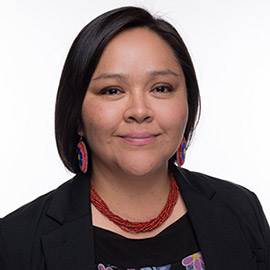
Jaime Gloshay, Loan officer at Acción and Co-Founder of the Native Women’s Business Summit
Natalia: Hey everyone, it’s time for our Investor Take. Proud to introduce you to Jaime Gloshay, loan officer at Acción. Jaime is also the co-founder of the Native Women’s Business Summit, and I am thrilled to be able to amplify their work. It was a fantastic weekend. Congrats, Jaime. And, Jaime is also White Mountain Apache, Diné-Navajo, and Kiowa. Thanks for coming into the studio, Jaime.
Jaime: Thank you for having me.
Natalia: What Investor Take do you have for us today? What sort of tip or best practice or takeaway do you have for entrepreneurs out there?
Jaime: I think really connecting your identity and who you are with your business is really fascinating and really important to just develop, design, implement, to plan, to see your vision through. It’s the lens that we have as Indigenous people, as Native people, that really differentiate us, and our path through entrepreneurship.
[music plays]
Natalia: Welcome back everyone! Amanda June from Indigenous Peoples’ Collective is still in the studio and I’m about to ask her about the first time that she ever pitched. Amanda, tell me about that. Do you remember when that was?
Amanda: That was yesterday to you in the Native Women’s Business Summit [laughs].
Natalia: Really?! That was the first time you ever pitched?
Amanda: It really was. For anything else that I’ve done, I’ve never tried to raise capital before, this is the first time. So I’ve been doing a lot of, just, research. I’ve been doing a lot of listening. I listened to your podcast, I listened to other podcasts, and that was the first time I’d really put all of the pieces together and put it out there.
Natalia: And how long have you been working on Indigenous Peoples’ Collective?
Amanda: I’d say the idea started formulating about five years ago, but I really didn’t think that I had anything at the time and it just kept, kind of, stewing in the back of my mind. I started a different company in between there. For the last three years I’ve been working on that. And now I felt after having a business already and going through that process and really understanding market and how these things develop and growing economies of scale, I thought – my mind immediately went back to that first idea and I thought, “I think I can fix this.” About six months ago, I think I really started hashing through like, “okay what would that model look like? What would we would start off with?” And then until today this year I really thought, “Okay I really need to do this.”
Natalia: So you mentioned that six months ago – and I’m just, like, writing this down, because I immediately thought about how you’re taking from that first company from six – you know, five years ago, you took that knowledge and thanks to that knowledge you were able to leapfrog and check out all that you have down from the past five months which is so powerful and I’m going to give a shout-out to another #WiseLatina out there called Nathalie Molina Niño because she has a book coming out – or it might come out depending on when someone’s listening to this episode – called “Leapfrog” where she talks about hacks to get more – particularly I think the focus is to get more women entrepreneurs out there. So I just want to give you kudos because that first experience of building that company five to six years ago, guess what, helped you leapfrog to where you are today. So I’m so proud of you, Amanda!
Amanda: Thanks! It’s been a long journey.
Natalia: So, did you ever pitch? Like, five or six years ago did you ever pitch for that company?
Amanda: No, my first company was a media company and I just thought, “I don’t really know what I’m doing,” but I felt another need there was that our voices weren’t being heard through the media. So I just thought “I need to go do this, too.” But I knew really nothing about starting a business. So it’s kind of been lightyears away from where I started.
Natalia: So, tell me about yesterday. What inspired you to pitch yesterday?
Amanda: Well, like I said – and I was laughing at myself because I was super fan-girling out. It was hilarious. I think I was the only one in the room in advance who knew who you were and when I found out you were coming to the Summit I was like, “that’s even more reason for me to go! I need to be there.” It was kind of one of those universal signals that just all of the things are pointing at “you have to be there.” And that’s my mission right now. I’m like, need to get this started. I need to do it. I see all of the pieces aligning, I see how it can be done. And now I understand a little bit more about raising capital and so I was like, “She’s going to be there I just need to put it all out there. You never know what’s going to come of it.” And now I’m on your podcast!
Natalia: I love it! So for anyone – either an inspiring entrepreneur, or a current entrepreneur that still has not stepped up to the plate to pitch, what would you share with them? They’re listening, or they’re reading our transcript, because of course we want to be inclusive for anyone who’s deaf or hard of hearing, we try to get transcripts made of the podcast. What would you tell them about why they should step up to the plate to do that first pitch?
Amanda: I would say if your heart’s there and this is what you really want to do, do the homework, learn how investing works, learn how pitches work, look for examples in podcasts like yours that teach them step-by-step and give examples of how it can be done and then just put your all into it. It does take some time. You know, if your business acumen isn’t there you have to grow that as well, but it’s so worth it. The support is out there. There are networks out there to support you and you just need to have faith in yourself and take that leap.
Natalia: And so, on that note, what would you wish someone had told you before yesterday to inspire you to step up to the plate to pitch before?
Amanda: I think it wasn’t so much about someone telling me to do it. I think it was more about me being ready to do it because I think even if someone told me to do it three to five years ago I was nowhere near where I am today. So that’s why I say about the preparation. If you really are serious about wanting to get a business off the ground and to scale, then you need to do your homework and learn about how these things work and get your business acumen up.
Natalia: I’m going to quote one of our early, early mentors and supporters of Pipeline Angels was Eghosa Omoigui. He is a black VC and he often talks about the MVS. So for anyone who’s checking out this episode right now, MVP – a lot of entrepreneurs are familiar – minimum value product, the leanest version of the business model, the start-up, the product that you can have. So people talk a lot about that. And MVS according to Eghosa is the minimum viable scholarship. What Eghosa talks about when it comes to underestimated founders is that we overdo the MVS. Which sometimes happens as a phase before the MVP. So for a lot of women, non-binary people, men of color founders, we do a lot of research, research, research, let’s add another appendix to our business plan so it’s super, super huge. Right? Another – hopefully one day sponsored however, right now not sponsored – shout-out as Nike says sometimes you have to just do it. And the reason I’m bringing that up is because even from your pitch yesterday to your pitch today there was this huge improvement. So this is such a great example of yes, I believe in what you’re saying. There’s so much that [as] underestimated founders we can be learning and reading about and researching and I’m also just going to encourage those listening and reading the transcript to take a page from your book and just step up to the plate and pitch. Because even if someone thinks they’re not ready yet, there’s a lot of waiting to cross all of the Ts and dot all of the Is and even just pitching, the act of pitching, could give someone that insight from someone, you know, like, that potential investor judge, or mentor/advisor/supporter who’s listening to that pitch could give them feedback and suggestions on “hey, have you thought about reading about this?” or “hey, have you thought about this other research?” etc., so…I know, I know, I tend to be a little bit provocative. I’m like, “just pitch! Just pitch! Come on, let’s do it!”
Amanda, it has been such a pleasure to get to know you these past couple of days. Thank you for being a supporter and fan of Pitch Makeover!
Amanda: Yes, definitely.
Natalia: You made my day when you were like, “I know who you are!” I’m like, “what! Someone in Albuquerque knows me?! I love that.” It’s such a cool full circle that from being a subscriber of the podcast to now having you on the podcast. Thanks for making it possible!
Amanda: And I would say that part of the reason why I pitch, you can encourage people all day but I really took the lead because of you. I was like, “I follow her and I know what she’s about.” So I think if you did ask people and I’m going to go around and still tell people about you, but you can get anyone to pitch because it’s you. [laughs]
Natalia: Oh, thank you! Let’s keep our fingers crossed because I want to have more seasons. More seasons of Pitch Makeover! So that means that we need to get more entrepreneurs to step up to the plate to pitch. Thanks so much for joining us, Amanda.
Amanda: Thank you so much for having me.
Natalia: Bye.
[music plays]
Vanessa Roanhorse: Hi, I’m Vanessa Roanhorse with the Native Women’s Business Summit. This year’s event is coming up April 5th and 6th at the Isleta Resort and Casino on Isleta Pueblo, 15 miles from the City of Albuquerque. For tickets and more information, please visit nativewomenlead.org. We hope to see you there.
